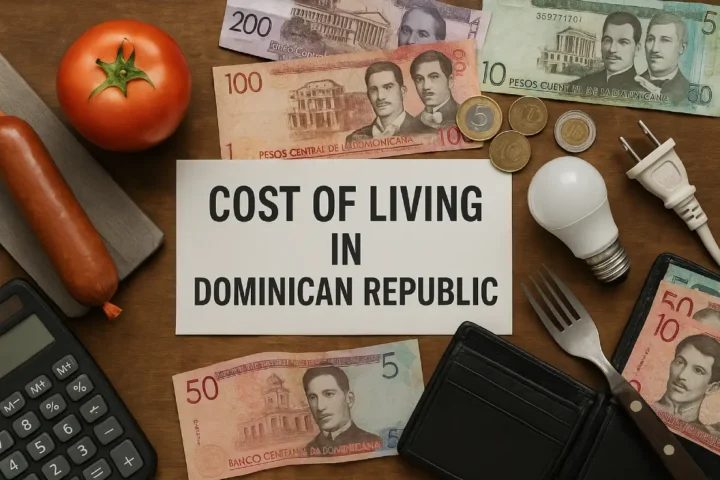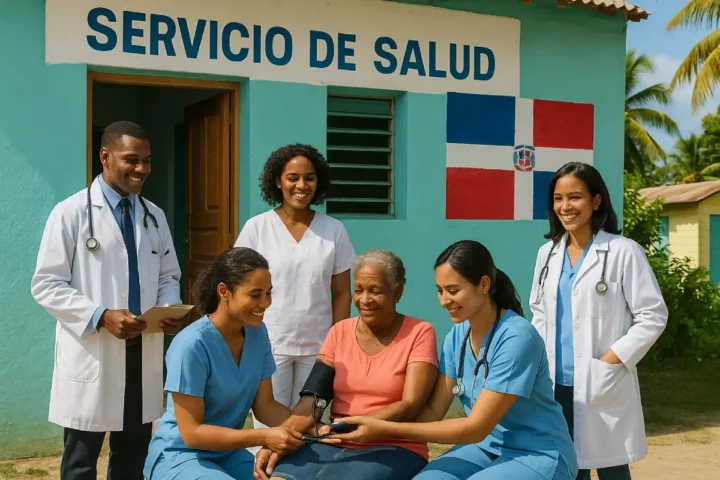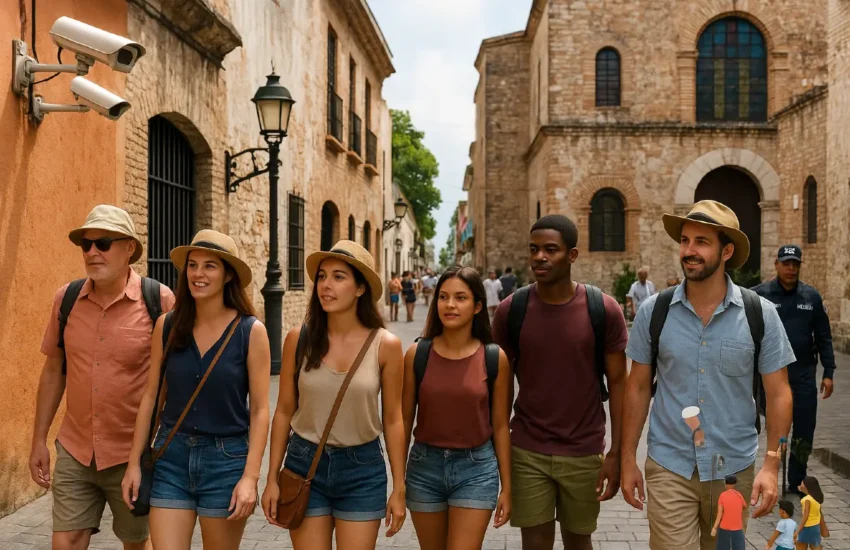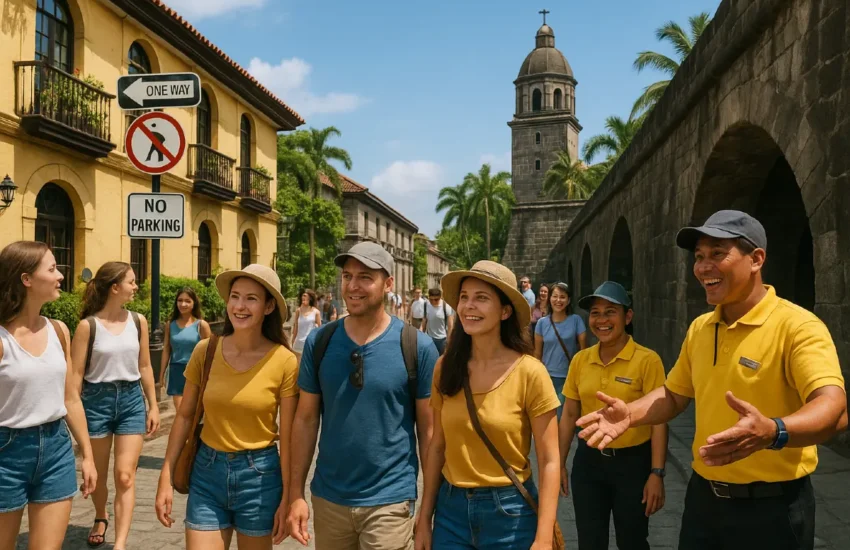Cost of Living in Dominican Republic for Expats
The cost of living in Dominican Republic is way less than you might expect. This Caribbean paradise lets you live a dream lifestyle at just 45.9% of what you’d spend in the US. The rent difference is even more dramatic – you’ll pay 75.7% less than US prices. People looking for an affordable tropical home will find the Dominican Republic beats most other destinations on cost.
The numbers tell an amazing story. A single person needs about $623 monthly before rent to live well here. On top of that, it takes around $2,220 monthly for a family of four’s basic expenses, not counting housing.
The sort of thing I love about these costs is how they work perfectly for retirees. They can enjoy a comfortable life with plenty of luxuries for roughly $1,355 per month – something that’s nowhere near possible in places like Puerto Rico or Costa Rica.

The savings are impressive in every category when you compare Dominican Republic prices to US costs. City center apartments go for just $359 monthly, while restaurant meals cost as little as $6.45. The reasonable prices for housing, food, transportation and healthcare are a great way to get more financial freedom. No wonder more expats choose this Caribbean gem to stretch their dollars without giving up their quality of life.
What is the Real Cost of Living in the Dominican Republic in 2025?
Life in the Dominican Republic costs less than you might think. This Caribbean paradise remains affordable in 2025 and offers great quality of life. Let me break down your actual expenses based on different situations.
Average Monthly Expenses for A Single Person
Living costs in the Dominican Republic can range from budget-friendly to comfortable based on your lifestyle choices. Recent data shows that a single person spends about $1,210 (RD$ 71,732) monthly with rent. The basics without housing come to around $623 per month.
Your location is a vital factor in your expenses. A one-bedroom apartment in Santo Domingo’s city center costs about $434. You’ll pay just $234 for similar places outside the center. A 45m² studio’s utilities average $45 monthly, and internet service costs about $17.
Food costs depend on your eating habits. Home cooking saves money, with local market prices at $1.20/kg for rice and $5/kg for chicken. Eating out is affordable too – a meal at a simple restaurant costs around $6.40.
Family of Four: What to Expect
A family of four can live well in the Dominican Republic at prices that don’t match North American costs. Monthly expenses add up to $2,720 (RD$ 161,308) with housing. Families need $2,000-$2,500 for a good lifestyle that covers all needs.
Housing takes the biggest chunk of your budget. City center three-bedroom apartments cost $853 monthly. Similar homes outside urban areas run about $451. Family utilities in an 85m² apartment average $84 monthly.
Families save on groceries since the Dominican Republic has the cheapest basic food basket in Central America and the Caribbean. Monthly family food costs range from $465-$1,270 based on income. School costs matter – international primary schools charge around $5,600 yearly, which matters most to expat families.
Retiree Lifestyle Costs Explained
Retirees find their US dollars go much further here. You can live comfortably on $1,500-$2,000 monthly. Some experts say $1,355 gets you a good life with luxuries you couldn’t afford back home.
The Pensionado visa program helps retirees with tax breaks on foreign income and discounts on utilities and entertainment. You need at least $1,500 in monthly pension or guaranteed income to qualify.
Healthcare costs matter to retirees. Private insurance costs $500-$1,500 yearly based on age and needs. Doctor visits cost about $40 out-of-pocket, much less than US prices.
Living costs here versus the US show why retirees love it. Everything costs 45.9% less than US averages, and housing is 75.7% cheaper. This means your fixed retirement income buys a better lifestyle than back in the States.
The Dominican Republic gives you an affordable Caribbean life whether you’re single, have a family, or retiring. You get that tropical lifestyle without breaking the bank.
Housing Costs in the Dominican Republic: Renting and Buying
The Dominican Republic’s housing market offers great value. This plays a big role in keeping the country’s living costs low. People who want to move to this tropical paradise should know how the housing market works to make smart financial choices.
Renting in City Centers vs Outside
Urban and suburban rental prices show a clear difference that can save you money. A one-bedroom apartment in Santo Domingo’s city center costs about $454 monthly. The same type of place outside the center runs around $246. That’s almost 50% in savings right there.
Bigger families need more space. Three-bedroom apartments in city centers cost $892 monthly. Similar units in suburban areas go for about $468. Tourist spots like Cabarete and Sosua keep their prices reasonable compared to other Caribbean spots.
Monthly utilities run about $63 for simple services like electricity, water, and garbage. Good internet costs around $50. Studio apartment dwellers pay less – about $45 for utilities.
Most newcomers rent before they buy. This helps them get to know different neighborhoods better. Vacation rentals cost more but remain cheaper than places in Puerto Rico or other Caribbean islands.
Buying Property: Is It Worth It?
The law treats foreign buyers just like Dominican citizens. This makes buying property straightforward. The market grows steadily each year. Apartment prices go up about 7% yearly, while houses increase by 5%.
Popular spots to buy include:
- Punta Cana: Perfect for luxury resorts and rental income
- Santo Domingo: The economic center with modern living spaces
- Las Terrenas: A welcoming expat community by the beach
- Puerto Plata: Beautiful coastline with budget-friendly choices
Buyers pay extra fees: 3% transfer tax, 0.25%-1% notary fees, and about 1% in legal costs. The whole deal usually adds 4.25%-5% to the property price. Mortgage rates run higher than US rates – 12.15% for Dominican peso loans and 8.98% for foreign currency loans.
Properties under $165,000 don’t need annual property tax. This makes retirement homes more affordable. Qualified retirees who invest $200,000 or more in property can get help with immigration.
Cost of Living in Dominican Republic vs US Prices
Housing costs differ greatly between the Dominican Republic and the US. Dominican apartments cost about $1,980 per square meter, houses go for $1,569. Similar spots in US cities often cost more than $5,000 per square meter.
The numbers tell the story clearly. US city centers charge $1,742 monthly for one-bedroom apartments. Similar places in the Dominican Republic cost $454 – that’s 74% less. City center apartments here cost $146 per square foot versus $301 in the US.
These lower prices help single people stretch their budgets. Retirees can afford options they couldn’t back home. The Dominican Republic remains one of the Caribbean’s most economical real estate markets. Beachfront homes start at $160,000 – much less than similar properties in Costa Rica.

Food, Groceries, and Dining Out: Daily Living Expenses
Food makes up much of the living costs in the Dominican Republic. The prices are a bargain compared to North American standards. My extensive shopping experience throughout the Caribbean shows Dominican grocery stores and markets give great value to budget-minded expats and travelers.
Grocery Shopping Costs for A Single Person
Dominican Republic’s affordable grocery prices help keep living costs down. A single person spends $200-300 each month on groceries. Local markets beat supermarket prices – rice costs about $1.09 per kilogram at markets and $1.25 at supermarkets. You’ll find fresh produce at bargain prices. Bananas sell for $0.42 per pound and tomatoes cost $0.73 per pound.
The country’s staple foods showcase its low living costs in US dollars. A dozen eggs runs about $1.74, fresh bread costs $1.52 per pound, and local cheese sells for $3.37 per pound. These prices let single people and retirees eat well without breaking the bank.
Eating Out: From Local Spots to Mid-range Restaurants
You’ll find food options at every price point. Street food vendors and local casual spots serve meals from $3-5 per person. Mid-range restaurants charge $15-30 for complete meals. A meal at a budget-friendly restaurant costs about $6.77. A three-course dinner for two at a nicer place averages $50.76.
Smart dining strategies can stretch your Dominican Republic budget:
- Lunch deals cost 30-40% less than dinner
- Local beer runs about $2.54 per pint
- Cappuccinos cost around $2.11
How Food Prices Compare to Puerto Rico and Costa Rica’s Living Costs
The Dominican Republic’s food costs shine when matched against US prices. Regional comparisons tell an even better story. Dominican food costs 42% less than Puerto Rico and 34.3% less than Costa Rica. Restaurant meals cost 53.3% less than Puerto Rico’s prices.
Grocery prices paint a similar picture. The Dominican Republic’s eggs cost 64.3% less than Puerto Rico’s and 48.8% less than Costa Rica’s. Fresh produce follows this trend – bananas cost 65.4% less than in Puerto Rico.
These food price differences make the Dominican Republic an attractive option for retirees and singles looking to live in the Caribbean. A modest 3.8% food inflation rate as of February 2025 helps maintain the country’s cost advantage.
Transportation, Utilities, and Internet Costs
Transportation costs shape your living expenses in the Dominican Republic as much as housing or food. The country has a variety of transportation choices that suit different budgets. Utility costs stay reasonable even with occasional service issues.
Public Transport and Taxi Fares
The Dominican Republic has an extensive and budget-friendly public transportation network. A round trip on Santo Domingo’s metro costs only RD$40 (less than $1). Coach busses like Caribe Tours and Metro Tours connect major cities with one-way fares between RD$200-500 ($3.40-$8.50).
You’ll find several local transportation options. Guaguas (minivans) are the most economical choice at RD$25-50 ($0.42-$0.85) per ride. Motoconchos (motorcycle taxis) get you around quickly at similar rates. Público shared taxis charge around RD$25-50, while private taxis start at RD$150 for more comfort.
Uber runs in Santo Domingo, Santiago, and Puerto Plata. It helps avoid language barriers and usually costs less than traditional taxis. A single person without a vehicle can manage transportation costs easily with these options.
Gasoline and Car Ownership
Surveys show that only 5% of Dominicans have a company car. Personal car ownership remains nowhere near North American levels. Vehicle owners pay about RD$71 per liter ($4.54 per gallon) for gasoline.
Some people save money by importing vehicles from the US. Shipping costs run $1,000-$1,500, with import duties at 5%. Retiree residents might find buying locally easier despite higher prices. Car ownership raises living costs in US dollars, but expenses still stay below US rates.
Monthly Utility Bills and Internet Plans
An 85m² apartment’s basic utilities (electricity, water, garbage) cost $57.90 monthly. The government combined garbage collection fees with electricity bills. This change should make services more efficient.
Internet costs are much lower than in the US. Users get median fixed speeds of 19.28 Mbps at $38.70 monthly. Major providers include:
- Claro: Fiber optic plans from $17.33 (5Mbps) to $83.54 (300Mbps)
- Altice: Similar offerings with slightly different pricing structures
Mobile phone plans with 10GB+ data cost about $19.20 monthly. These rates beat similar services in Puerto Rico and Costa Rica. Remote workers find these affordable rates attractive when thinking about retiring in this tropical paradise.

Healthcare, Entertainment, and Other Hidden Costs
Living in the Dominican Republic involves more than just housing and food costs. Healthcare and entertainment expenses affect your budget significantly. My extensive Caribbean exploration shows that DR provides good value despite its quirks.
Healthcare Options for Expats and Retirees
Healthcare demands special attention from anyone planning to live in DR. The country uses a three-tiered healthcare financing system, and expats usually fall into the “contributive subsidized” tier. Public and private facilities show dramatic quality differences.
Most towns have public hospitals offering simple services at no cost, though patients pay for medicine, x-rays, and other treatments. Foreign residents should note that patients must bring their own sheets, pillows, and food during hospital stays.
Private health insurance becomes crucial for retirees and expats. Simple coverage through international plans costs around $800 yearly, while complete plans range from $1,000-$2,500 per year. Cigna, AXA, and Bupa Global lead the provider list.
Entertainment and Leisure Activities
DR residents enjoy numerous economical leisure options. Monthly fitness club memberships cost $24, which sits nowhere near US prices. Movie tickets run about $5.60 per person, and tennis courts rent for roughly $13 per hour.
Local restaurants serve meals for $11, while couples can enjoy three-course dinners for $47. Your retirement money stretches further here compared to Puerto Rico or Costa Rica’s expenses.
Unexpected Expenses to Budget For
Life in DR remains reasonably priced in US dollars, though newcomers face some surprising costs. Power outages happen frequently, so backup power solutions become essential. Expats typically spend $300-$500 on power banks or generators.
Medical facilities require healthcare deposits before treatment—even during emergencies. Everyone should keep at least $1,000 ready for such situations.
Non-residents must pay $200-$300 yearly for visa renewals. Imported items carry heavy duties too. Electronics, appliances, and specialty foods cost 30-40% more than US prices.
Cost of Living in Dominican Republic Frequently Asked Question
What is the Average Monthly Cost of Living for A Single Person in the Dominican Republic?
A single person can comfortably live in the Dominican Republic for about $1,210 per month, including rent. This covers basic expenses such as housing, food, transportation, and utilities. However, costs can vary depending on lifestyle choices and location within the country.
How Do Housing Costs in the Dominican Republic Compare to the United States?
Housing costs in the Dominican Republic are significantly lower than in the United States. Rent prices are approximately 75.7% less than US averages. For example, a one-bedroom apartment in a city center costs around $454 per month, compared to $1,742 in the US.
What are the Typical Grocery Expenses for A Family in the Dominican Republic?
A family’s grocery costs in the Dominican Republic are quite affordable. The family food basket price ranges from $465 to $1,270 per month, depending on income level. The country boasts the cheapest basic food basket in Central America and the Caribbean, making it an economical choice for families.
How Much Does Healthcare Cost for Expats and Retirees in the Dominican Republic?
Healthcare costs for expats and retirees in the Dominican Republic are generally lower than in the US. Private health insurance ranges from $1,000 to $2,500 annually for comprehensive coverage. Regular doctor visits cost around $40 out-of-pocket, which is substantially less than in the United States.
What Unexpected Expenses Should Newcomers Budget for in the Dominican Republic?
Newcomers should budget for several unexpected expenses in the Dominican Republic. These include backup power solutions ($300–$500) due to regular electricity outages, healthcare deposits (minimum $1,000 emergency fund), annual visa renewals for non-residents ($200–$300), and higher prices for imported goods (30–40% above US prices).
What Are the Average Utility Costs in the Dominican Republic?
Utility costs in the Dominican Republic are relatively moderate. Electricity, water, gas, and internet for a standard apartment typically range between $80 and $150 per month. However, heavy air conditioning use can significantly increase electricity bills, especially during the hotter months.
How Affordable Is Public Transportation in the Dominican Republic?
Public transportation is one of the most affordable aspects of living in the Dominican Republic. A one-way ticket on local transport generally costs less than $1, and monthly passes are available for around $30. Taxis and rideshares are also cheaper than in many Western countries, though prices can vary by region.
Is Dining Out Expensive in the Dominican Republic?
Dining out is quite affordable, especially at local restaurants. A meal at an inexpensive eatery typically costs around $5 to $8, while a three-course meal for two at a mid-range restaurant can be enjoyed for about $30 to $50. Street food is also popular and very budget-friendly.
How Much Do Education Costs Vary for Expats in the Dominican Republic?
Education costs for expat families can vary significantly. Public schools are free but may not meet the standards some expats prefer. Private international schools can range from $3,000 to $10,000 per year depending on the institution, language of instruction, and location.
What Lifestyle Trade-Offs Do Expats Commonly Make in the Dominican Republic?
Expats often trade the conveniences of urban infrastructure for a more relaxed lifestyle and lower cost of living. While modern amenities are available in cities, smaller towns may lack consistent utilities or high-speed internet. However, the trade-off often includes better weather, less stress, and lower day-to-day expenses.


